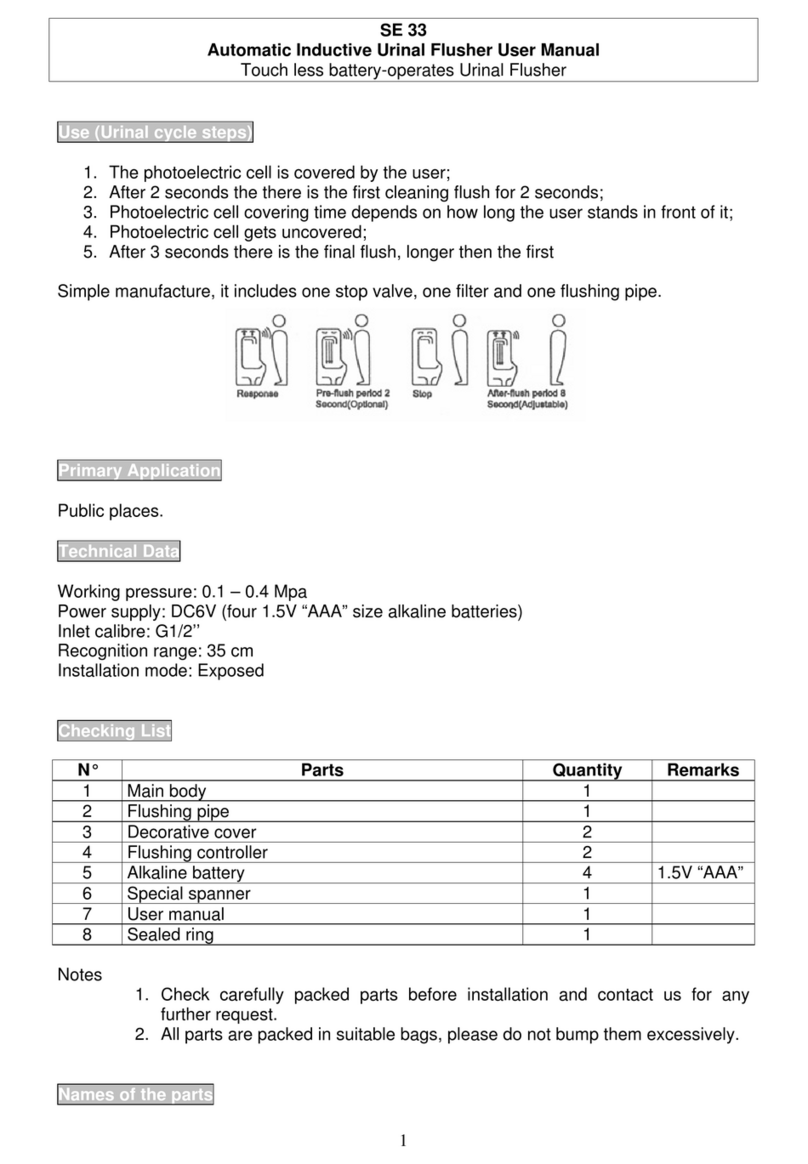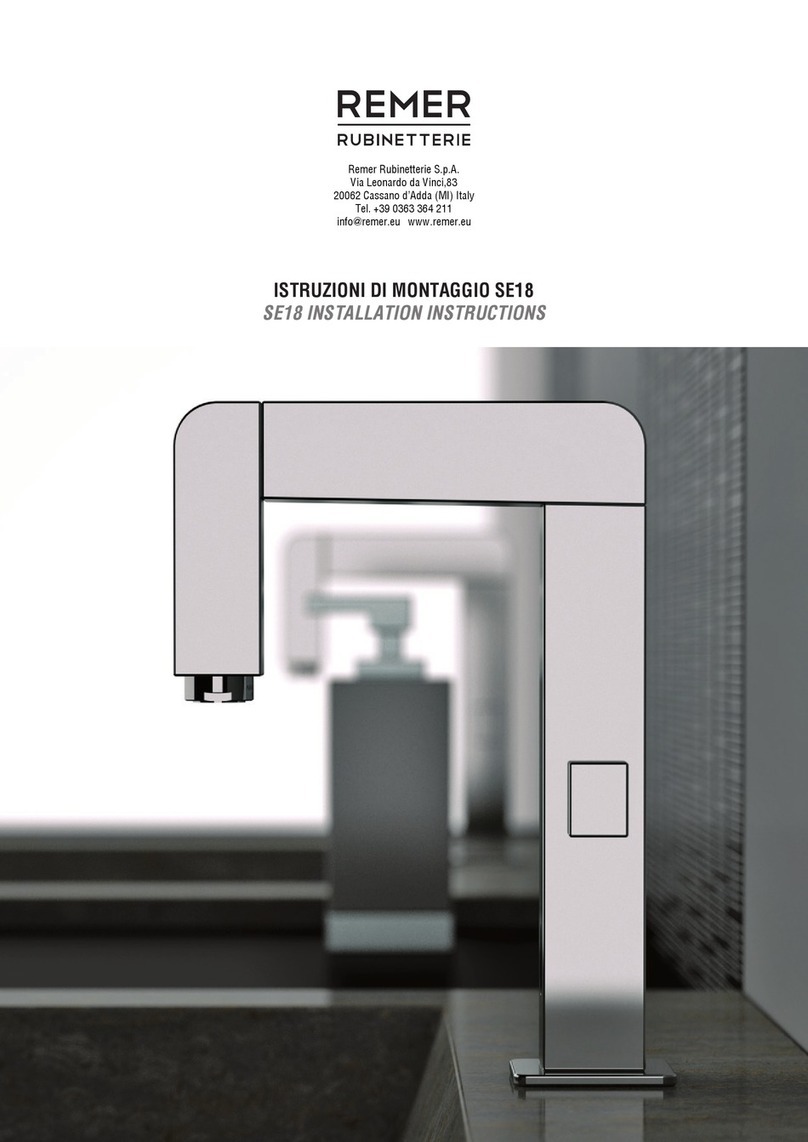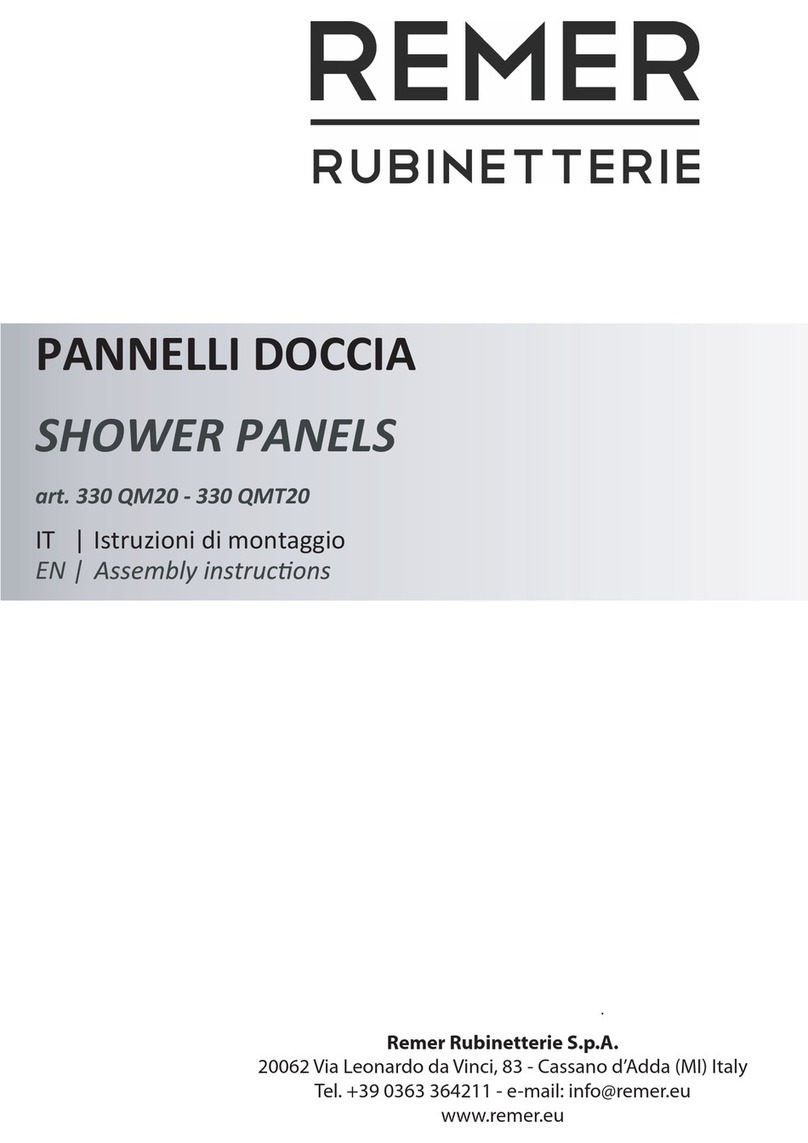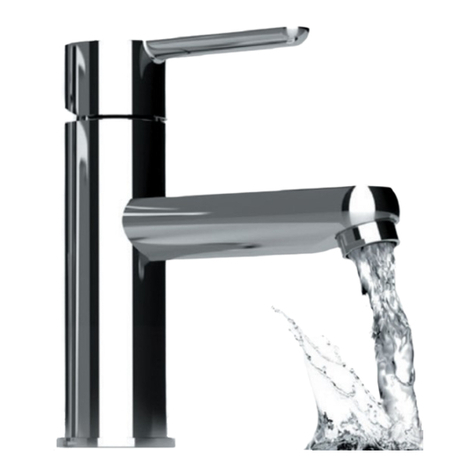
NOTE PRELIMINARI:
* Assicurarsi che la pellicola protettiva del sensore sia rimossa prima dell’utilizzo.
* La pulizia del sensore è da effettuarsi esclusivamente con panno privo di agenti chimici e/o abrasivi. Si evidenzia il fatto che rigando/grafando o alterando
la struttura superciale della zona sensore, durante la pulizia o uso improprio, questi può essere inciato operativamente, così come tutti gli apparecchi
utilizzanti tecnologia IR.
* Si consiglia di mantenere l’aeratore e i ltri in ingresso sempre puliti, applicando una corretta manutenzione e sistematica pulizia degli stessi.
* Vericare che le batterie siano inserite correttamente nell’alloggiamento portabatterie seguendo la polarità riportata all’interno del portabatterie vericando
di far slittare le batterie negli alloggiamenti.
* In caso di sostituzione batterie utilizzare solo batterie tipo LITIO da 1.5V modello AA.
* Effettuare l’inserimento del connettore di alimentazione, dal portabatterie al cavo di alimentazione dell’elettronica, seguendo la sagoma di innesto. La
mancata o forzata inserzione potrebbe danneggiare la connessione elettrica.
* Non torcere i connettori di alimentazione all’inserimento o alla estrazione degli stessi.
* Non scollegare i connettori di alimentazione agendo sui cavi, ma sui connettori stessi con delicatezza.
* Assicurarsi che i ltri in ingresso al rubinetto siano puliti, in quanto la valvola necessita di una pressione minima in ingresso di 1Bar per operare correttamente.
Qualora non vi fosse adeguata pressione dall’impianto idraulico o qualora i ltri fossero intasati potrebbe non essere eseguita la chiusura della valvola causa
perdita di pressione nell’impianto alla apertura della stessa.
In sporadici casi si possono vericare interferenze ambientali tali per cui ne può seguire un anomalo funzionamento di prodotto; in questo caso è suggeribile
effettuare un collegamento di messa a terra del rubinetto stesso.
NOTE DI PRIMA ACCENSIONE ( E DI PRIMA ACCENSIONE AL CAMBIO BATTERIE )
1) Quando viene effettuato il collegamento batteria l’indicatore luminoso si accende a verica della catena alimentazione/sensore.
2) Allo spegnimento dell’indicatore segue la chiusura della valvola del rubinetto. Questa fase permette di vericare la chiusura della valvola.
3) Entro 5 secondi dallo spegnimento dell’ indicatore luminoso, coprendo con la mano il sensore, questi si accendera’ per qualche secondo indicando cosi’ la
selezione di funzionamento a basso consumo energetico (consigliato per funzionamento a batterie). Se in questi 5 secondi non si copre con la mano il sensore, il
prodotto funzionerà in modalità standard (consigliato per funzionamento a rete elettrica).
4) Coprire nuovamente il sensore con la mano per attivare la valvola in apertura. L’indicatore luminoso emettera’ un breve singolo lampeggio indicando l’apertura
della valvola.
5) Alla rimozione della mano, seguira’, qualche secondo dopo, la chiusura della valvola. L’indicatore luminoso emettera’ un breve singolo lampeggio indicando la
chiusura della valvola.
6) L’indicazione di batteria scarica viene proposta con una serie di lampeggi all’accecamento del sensore. In questo caso eseguire il cambio batterie.
PRELIMINARY NOTES:
* Make sure that the sensor protective lm is removed before use.
* Sensor cleaning has to be carried out exclusively with chemicals and/or abrasives-free lint. Note that scratching or altering the sensor surface structure area
during cleaning process or an improper use can operationally damage it, as well as all devices using IR technology.
* It is recommended to keep the aerator and the inbound lters always clean, carrying out a proper maintenance and periodic cleaning.
* Verify that the batteries are correctly inserted into their compartment according to the polarity indicated inside it and making sure to let the batteries slide
into the slots.
* When replacing batteries, use only 1.5 V lithium batteries type AA.
* Insert the power connector, from the battery to the electronic power cable, following the outline of the graft. Failure or forcing the insertion may damage the electrical
connection.
* Do not twist the power connectors when inserting or extracting them.
* Do not disconnect the power connectors acting on cables, but gently acting on the connectors themselves.
* Make sure that the faucet inbound lters are clean, as the valve requires a 1Bar minimum input pressure to work properly. If there is not enough pressure
from the hydraulic plant or lters are clogged, th e valve may not close due to loss of pressure in the system at its opening.
In sporadic cases environmental interference may occur causing a malfunction of the product; in this case it is recommended to make a grounding connection of the tap
itself.
NOTES ABOUT FIRST START ( AND RESTART AT BATTERIES REPLACEMENT )
1) When the battery connection is carried out, the sensor indicator light turns on to verify the power/sensor chain.
2) When the indicator turns off, the closing of the faucet valve will follow. This phase allows to verify the valve closing.
3) Within 5 seconds from the indicator light turning off ( at batteries connection ), covering the sensor with the hand, the sensor light will turn on for a few seconds
thereby indicating the low energy consumption operation selection (recommended for operation with batteries). If the sensor is not covered with the hand within
5 seconds, the product will work in “standard mode” (recommended for mains operation).
4) Cover again the sensor with the hand to activate the valve opening. The indicator light will emit a quick single ashing indicating the valve opening.
5) Upon removal of the hand, the valve closing will follow a few seconds later. The indicator light will emit a quick single ashing indicating the valve opening.
6) The low battery notice is shown with a series of ashes when covering the sensor. In this case need to carry out battery replacement.































